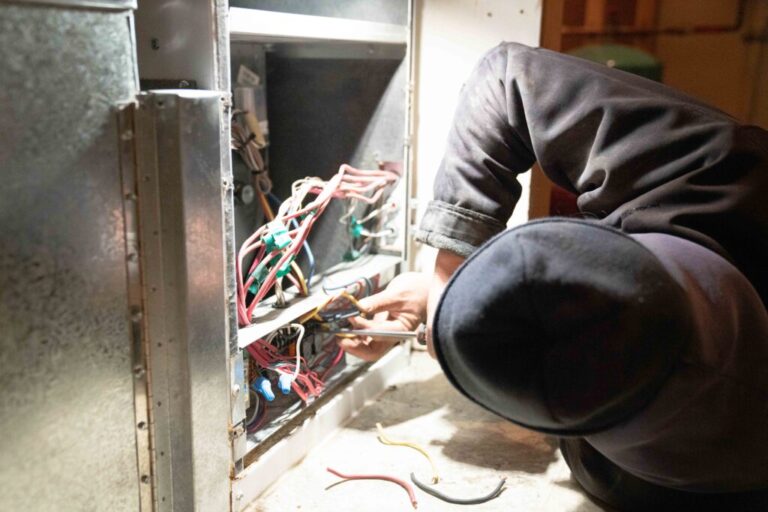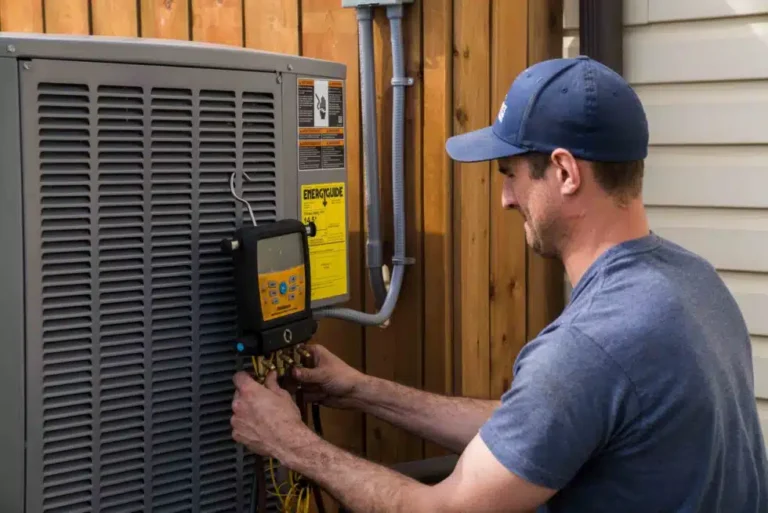Understanding Different Types of Furnaces
When it comes to heating your home effectively, understanding the different types of furnaces available on the market is crucial. Each type has its unique features, advantages, and potential drawbacks, making the choice a significant decision for any homeowner. The primary furnace types include gas, electric, oil, and propane.
Gas Furnaces
Gas furnaces are among the most popular choices due to their efficiency and cost-effectiveness. Powered by natural gas, these systems are known for delivering consistent heat through ductwork. They typically have a high AFUE (Annual Fuel Utilization Efficiency) rating, often reaching up to 98%, making them an excellent choice for those concerned about energy efficiency and carbon footprint.
Electric Furnaces
For homes without access to natural gas, electric furnaces offer a viable alternative. They convert electricity into heat and are known for their simplicity and reliability. While the initial cost is generally lower, running costs can be higher, especially in areas with steep electricity prices.
Oil Furnaces
Oil furnaces are less common but still used in regions where oil is a readily available resource. These units can provide efficient heating, although they require regular maintenance to ensure optimal performance. They are generally more expensive to operate than gas furnaces.
Propane Furnaces
In rural areas where other fuel sources might be limited, propane furnaces are an efficient option. These systems are similar to gas furnaces in design but use propane as their fuel source. Propane furnaces are known for their powerful heating capabilities and are a good option if you need flexible fuel storage.
Choosing the right furnace involves considering factors such as fuel availability, cost, and efficiency. Each type of furnace has its place, and understanding these distinctions will help you make an informed decision tailored to your specific needs.
Key Factors to Consider When Choosing a Furnace
When embarking on the journey of selecting a new furnace, numerous key factors come into play to ensure that your investment leads to optimal comfort and efficiency. The decision is not merely about choosing a brand or model; it involves understanding the intricate dynamics that contribute to a well-functioning heating system tailored to your specific needs. Here are some pivotal considerations:
1. Furnace Efficiency
Efficiency is a paramount factor. Modern furnaces boast high Annual Fuel Utilization Efficiency (AFUE) ratings, often exceeding 95%. This signifies that they convert a majority of their fuel into heat, reducing energy waste and ensuring lower monthly utility bills.
2. Size and Capacity
Choosing the right size for your furnace is crucial. An undersized furnace may struggle to heat your home adequately, while an oversized one can cycle on and off too frequently, leading to wear and tear. Consulting with HVAC professionals can help determine the appropriate capacity based on your home’s square footage, insulation, and climate conditions.
3. Type of Furnace
Different types of furnaces, such as gas, electric, oil, and dual-fuel systems, offer unique advantages. Gas furnaces are commonly favored for their cost-effectiveness and efficiency, while electric furnaces, though initially more expensive, are easier to install and maintain.
4. Installation and Maintenance Costs
Beyond the purchase price, consider the costs associated with installation and long-term maintenance. A professional installation can enhance the lifespan and performance of your furnace, while regular maintenance is essential to prevent unexpected breakdowns and costly repairs.
By weighing these factors carefully, you can make an informed decision that ensures comfort, energy efficiency, and reliability throughout the harshest winters.
How Furnace Efficiency Impacts Your Choice
When it comes to selecting the perfect furnace for your home, efficiency is arguably one of the most critical factors to contemplate. Furnace efficiency, quantified by the Annual Fuel Utilization Efficiency (AFUE) rating, provides insight into how well your furnace converts fuel into heat. Essentially, it reflects the percentage of fuel that is effectively turned into warmth for your home, while the remainder is lost through exhaust.
Modern furnaces showcase remarkable advancements in efficiency. High-efficiency models boast AFUE ratings of 95% or higher, meaning they convert 95% of the fuel into heat, with only 5% wasted. This translates directly into lower energy bills and a reduced environmental footprint. In contrast, older models may have AFUE ratings as low as 60% to 70%, resulting in higher operating costs and less consistent home comfort.
The Financial Implications
Investing in a high-efficiency furnace can significantly decrease your monthly heating expenses. Although the initial cost may be higher than less efficient units, the long-term savings on utility bills often justify the investment. Moreover, many regions offer rebates and incentives for upgrading to energy-efficient systems, further alleviating the upfront financial burden.
Comfort and Environmental Considerations
Higher efficiency furnaces tend to provide more consistent heating, reducing temperature fluctuations within your home. This consistency not only enhances comfort but also contributes to the longevity of the system. Additionally, a furnace with higher efficiency produces fewer greenhouse gases, aligning with environmentally sustainable practices—a priority for many homeowners today.
Therefore, when choosing a furnace, considering efficiency is not just about cost—it’s about the value it offers in terms of comfort, environmental responsibility, and long-term savings.
The Importance of Proper Furnace Sizing for Your Home
When it comes to selecting a furnace for your home, the importance of choosing the right size cannot be overstated. Proper furnace sizing is critical to ensure both optimal comfort and energy efficiency, especially in the harsh winters of Saskatoon. A furnace that is too small will struggle to heat your home adequately, leaving you shivering through the colder months. Conversely, a furnace that is too large will cycle on and off frequently, leading to increased wear and tear, higher energy bills, and a less comfortable living environment.
The size of the furnace directly affects its ability to maintain a consistent indoor temperature. By ensuring the furnace is appropriately sized, homeowners can achieve a balance where the system runs efficiently without overworking. This not only extends the lifespan of the furnace but also helps in reducing utility costs. Additionally, an accurately sized furnace reduces the risk of system breakdowns during peak usage times when you need it the most.
Sizing is determined by various factors including the square footage of your home, the quality of your insulation, and local climate conditions. Consulting with a professional HVAC contractor, like those at Pro Service Mechanical, is advisable. They can perform a detailed assessment and recommend the best furnace size for your specific needs. This expert guidance ensures that you enjoy a warm, comfortable home and a heating system that operates at peak efficiency.
Comparing Initial Costs and Long-Term Savings of Furnaces
When exploring the options for a new furnace, it is crucial to balance the initial investment with potential long-term savings. The upfront cost of a furnace can vary widely depending on the model, brand, and features. High-efficiency furnaces, for example, may carry a higher price tag, but they offer significant energy savings over time. These models often achieve an Annual Fuel Utilization Efficiency (AFUE) rating of 95% or higher, meaning they convert nearly all of their fuel into heat, minimizing waste and reducing your utility bills.
The initial cost factor should be evaluated alongside expected savings. Newer furnaces that boast advanced technology not only consume less energy but also require fewer repairs. This reduction in repair frequency can be attributed to improved durability and reliability, leading to fewer service calls and less downtime during harsh Saskatoon winters.
Moreover, investing in a furnace with cutting-edge energy efficiency can enhance your home’s overall comfort. These units maintain a more consistent indoor temperature, ensuring even heating throughout your living space. Additionally, the enhanced safety features of modern furnaces, such as improved gas valves and automated shut-offs, offer peace of mind, protecting your family and property.
Ultimately, while the initial expense of a high-efficiency furnace may seem daunting, the long-term savings and benefits in energy costs, reliability, comfort, and safety often justify the investment. By choosing a furnace that meets both your immediate budget and your long-term savings goals, you ensure a warm and worry-free winter season.




